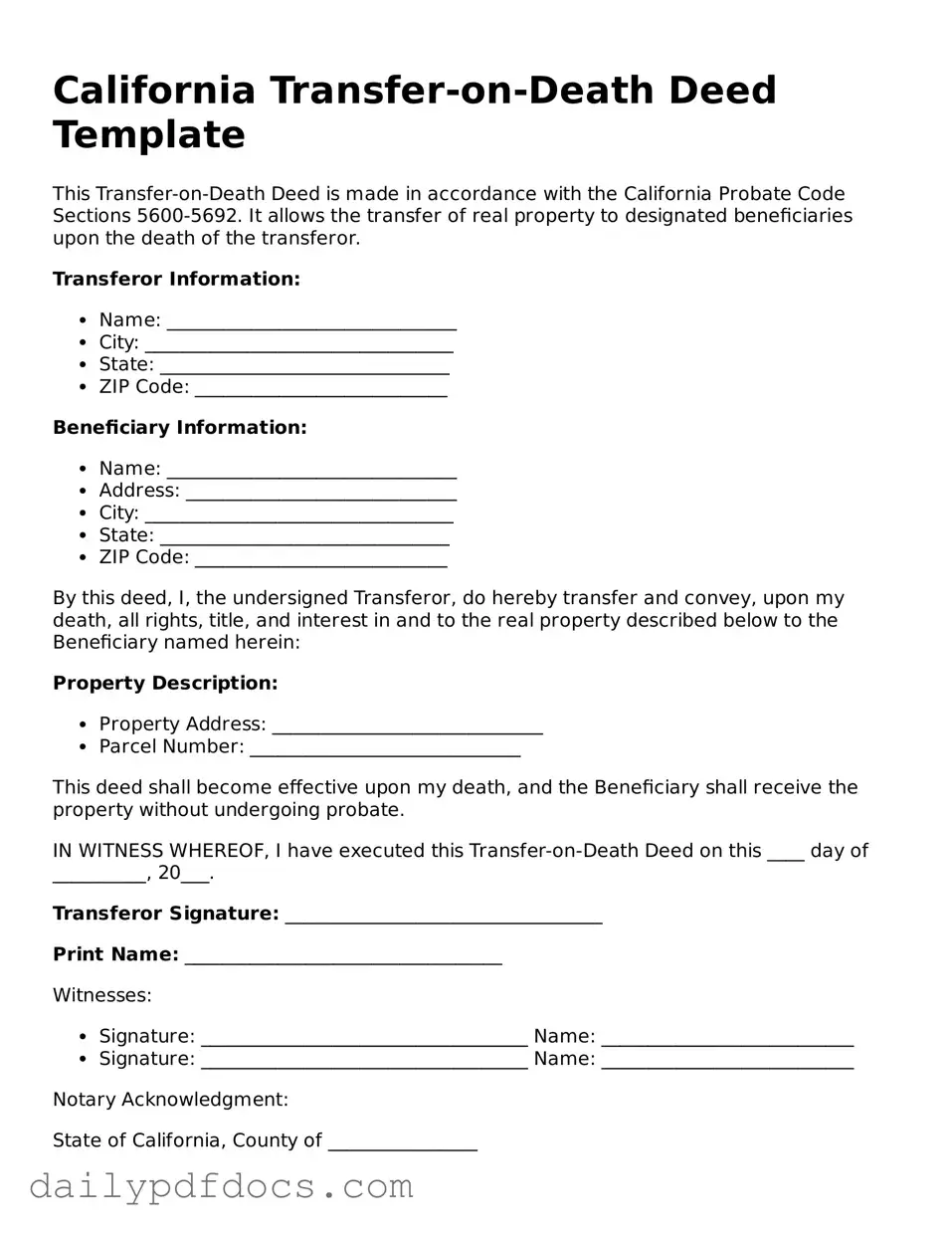What is a California Transfer-on-Death Deed?
A Transfer-on-Death Deed (TOD) allows a property owner to transfer real estate to a beneficiary upon their death, without the need for probate. This deed must be recorded during the owner's lifetime and becomes effective only after their death.
Who can use a Transfer-on-Death Deed in California?
Any individual who owns real estate in California can use a Transfer-on-Death Deed. This includes sole owners and co-owners, as long as the property is not held in a trust or part of a partnership.
How do I create a Transfer-on-Death Deed?
To create a Transfer-on-Death Deed, you must fill out the form with your information, the beneficiary's information, and a legal description of the property. The form must be signed in front of a notary public and then recorded with the county recorder's office where the property is located.
Do I need to notify the beneficiary when I create a Transfer-on-Death Deed?
While it is not legally required to notify the beneficiary, it is a good practice to inform them. This can help avoid confusion and ensure they are aware of their future interest in the property.
Can I change or revoke a Transfer-on-Death Deed?
Yes, you can change or revoke a Transfer-on-Death Deed at any time while you are alive. To do this, you must create a new deed or file a revocation form with the county recorder’s office, ensuring that the previous deed is effectively canceled.
What happens if the beneficiary dies before me?
If the beneficiary named in the Transfer-on-Death Deed dies before you, the deed will become void. You may want to name an alternate beneficiary to ensure the property is transferred as intended.
Is a Transfer-on-Death Deed subject to taxes?
Generally, a Transfer-on-Death Deed does not trigger property taxes at the time of transfer. However, the beneficiary may be responsible for property taxes once the transfer is complete. It is advisable to consult a tax professional for specific guidance.
Can I use a Transfer-on-Death Deed for all types of property?
A Transfer-on-Death Deed can only be used for residential real estate. It cannot be used for commercial properties or personal property such as vehicles or bank accounts.
What if I have multiple beneficiaries?
You can name multiple beneficiaries in a Transfer-on-Death Deed. The property will then be divided among them according to your instructions. Make sure to clearly specify how you want the property divided to avoid disputes later.
